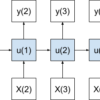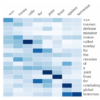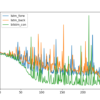Sequence prediction is a problem that involves using historical sequence information to predict the next value or values in the sequence. The sequence may be symbols like letters in a sentence or real values like those in a time series of prices. Sequence prediction may be easiest to understand in the context of time series […]










